
新的8-OHdG Check ELISA(KOG-200SE)试剂盒易于使用。以下是使用本产品可获得最佳效果的技术提示。请阅读产品包装中随附的说明手册。
这些技巧可能对使用其他ELISA产品(例如“高灵敏8-OHdG Check”和“ HEL ELISA kit”)有用。请确认某些实验条件与“ New 8-OHdG Check”的实验条件不同。
打开“ New 8-OHdG Check”包装
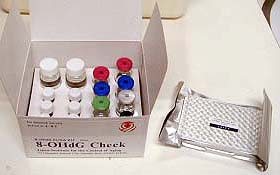
Bring out the package from refrigerator, and stand for 1 hour at room temperature.
Open the package. Conponents which will not be used in 2 hours should be stored at refrigerator.
![]()
8-OHdG预包被微孔板的制备
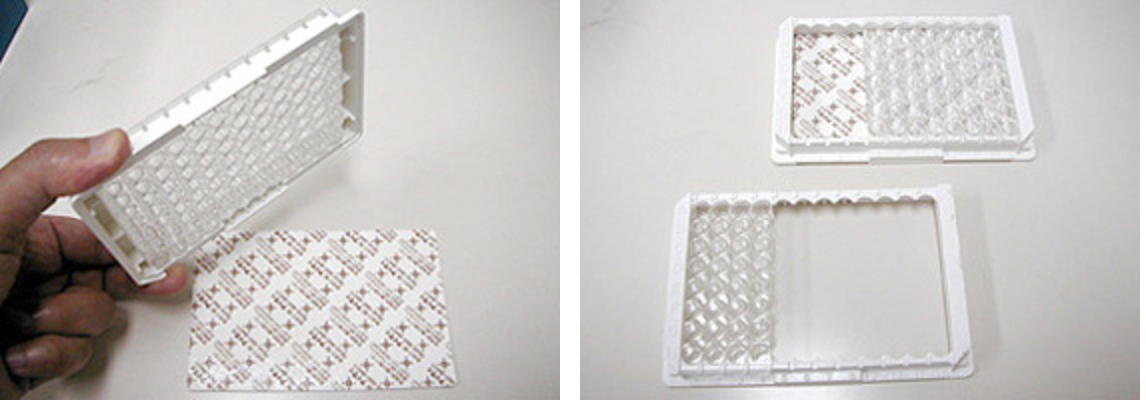
Remove the desiccant attached at the base of the plate. If you are planning to use some wells on the other day, please remove strip wells from the frame, and store at 4 °C in the bag.

将样品和标准品倒入微孔板
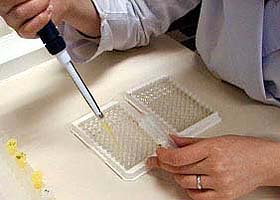
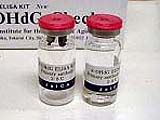 Prepare primary antibody reagent. Mix one vial of primary antibody solution to primary antibody vial.
Prepare primary antibody reagent. Mix one vial of primary antibody solution to primary antibody vial.
Pour 50 micro L of samples and standards to wells accurately. Inaccuracy of the pipette volume may cause errors of 8-OHdG results. In some cases, 'edge effect' can be observed at upper and bottom row.
Please take care that samples and standards must be applied to the well first, and subsequently primary antibody reagent.

Primary antibody
_ueditor_page_break_tag_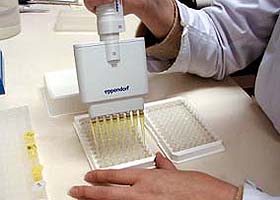
Start antigen-antibody reactions by pouring 50 µL of primary antibody reagent to all well but blank well. Instead of primary antibody reagent, 100 µL of PBS or wash buffer should be poured to blank well.
Inaccuracy of the pipette volume may cause errors of 8-OHdG results. The bottom and side wall (up tp 5mm from the bottom) of the wells, 8-OHdG antigen is precoated. Please take care not to touch or scrape by pipette tips.

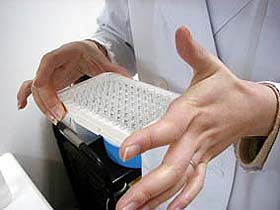 Tap the side of the plate gently for 3 to 5 times, and mix the content of wells.
Tap the side of the plate gently for 3 to 5 times, and mix the content of wells.

Primary antobody reaction
_ueditor_page_break_tag_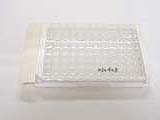
Seal the plate tightly.
Incubate for one hour (50-70 minutes) in the water bath or incubator controled at 37 °C. Please take care to incubate not longer than 70 minutes.
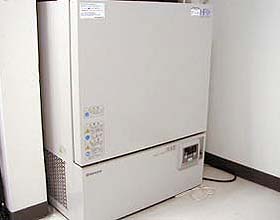 Temperature control is very important for the reproducibility of data. Please take care that the temperature is controlled uniformly. If your results would not be stable, please try water bath.
Temperature control is very important for the reproducibility of data. Please take care that the temperature is controlled uniformly. If your results would not be stable, please try water bath.

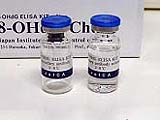 Prepare secondary antibody reagent.
Prepare secondary antibody reagent.

Washing
_ueditor_page_break_tag_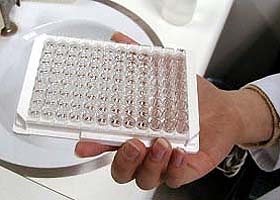
Hold the plate tightly to prevent the splits falling.
About washing machines and aspirators
Use of automatic washing machines or aspirators may result in high background, and not suitable for 8-OHdG ELISA. Please wash the plate manually.

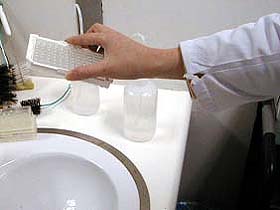
Put the micro plate upside down, and swing to discard the reagent.
Take care
This process is very important for reproducibility and blank. This product is based on competitive ELISA system, and very sensitive for trace well-to-well cross contamination of primary antibody.
Advice to obtain stable data
1) Please swing vigorously, and discard reagent.
2) Hold the plate contiously upside down, and put on new paper towels to remove water drop.
3) Pat the plate to the paper towel.
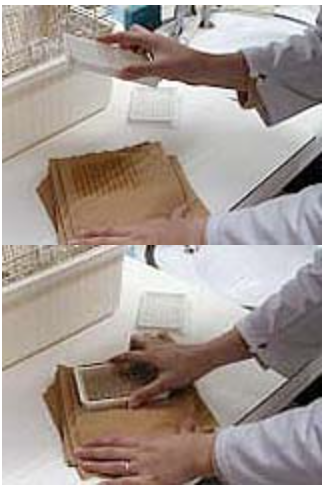
Tap the plate to new paper towels vigorously for 5 times, and remove water drop.
Please take care not to dry up. Don't touch or wipe inside the wells. Replace the paper towel when it becomes wet or polluted.

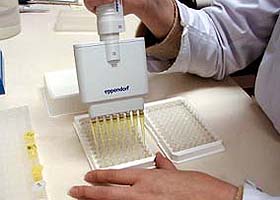
Pour diluted washing reagent 250 µL/well using 8 channel pipette.
Washing reagent should be poured into the well in 3 minutes not to dry the well.
NOTE: Dried wells may cause non-specific increase in absorbance or instability of data.
Take care for the first washing
As mentioned above, this product is based on competitive ELISA system, and very sensitive for trace contamination of primary antibody between wells. Please take care not to touch the pipette tip to the wells, to prevent well to well transfer of primary antibody mediated by pipette tips. Contamination of primary antibody may cause increase in absorbance at blank well.

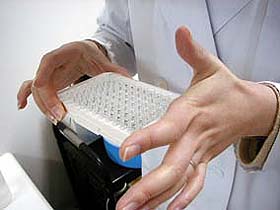 Shake the plate slowly.
Shake the plate slowly.
Perform washing process for 3 times as described above.
Finally, discard washing reagent from wells, and remove water drop from the inside of the well.

二抗
 Pour secondary antibody reagent 100 µL/well to all well.
Pour secondary antibody reagent 100 µL/well to all well.
Please take care not to dry inside wells.

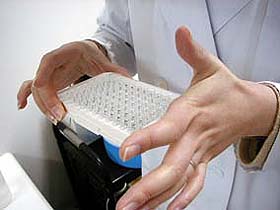 Tap the side of the plate gently for 3 to 5 times, and mix the content of wells.
Tap the side of the plate gently for 3 to 5 times, and mix the content of wells.
二抗反应
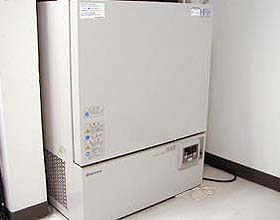
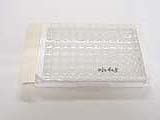 Seal the plate tightly.
Seal the plate tightly.
Incubate for one hour (50-70 minutes) in the water bath or incubator controled at 37 °C.
Please take care to incubate not longer than 70 minutes.
Temperature control is very important for the reproducibility of data. Please take care that the temperature is controlled uniformly. If your results would not be stable, please try water bath.

洗涤
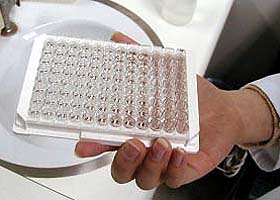 Hold the plate tightly to prevent the splits falling.
Hold the plate tightly to prevent the splits falling.

 Put the micro plate upside down, and swing to discard the reagent.
Put the micro plate upside down, and swing to discard the reagent.

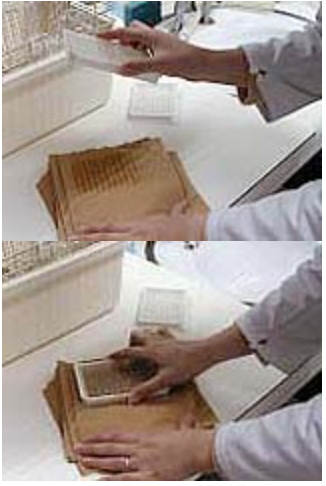 Tap the plate to new paper towels vigorously for 5 times, and remove water drop.
Tap the plate to new paper towels vigorously for 5 times, and remove water drop.
Please take care not to dry up. Don't touch or wipe inside the wells.
NOTE: Replace the paper towel every time. Residual secondary antibody may cause non-specific increase in absorbance or instability of data.

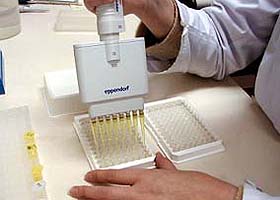 Pour diluted washing reagent 250 µL/well using 8 channel pipette.
Pour diluted washing reagent 250 µL/well using 8 channel pipette.
Washing reagent should be poured into the well in 3 minutes not to dry the well.
NOTE: Dried wells may cause non-specific increase in absorbance or instability of data.